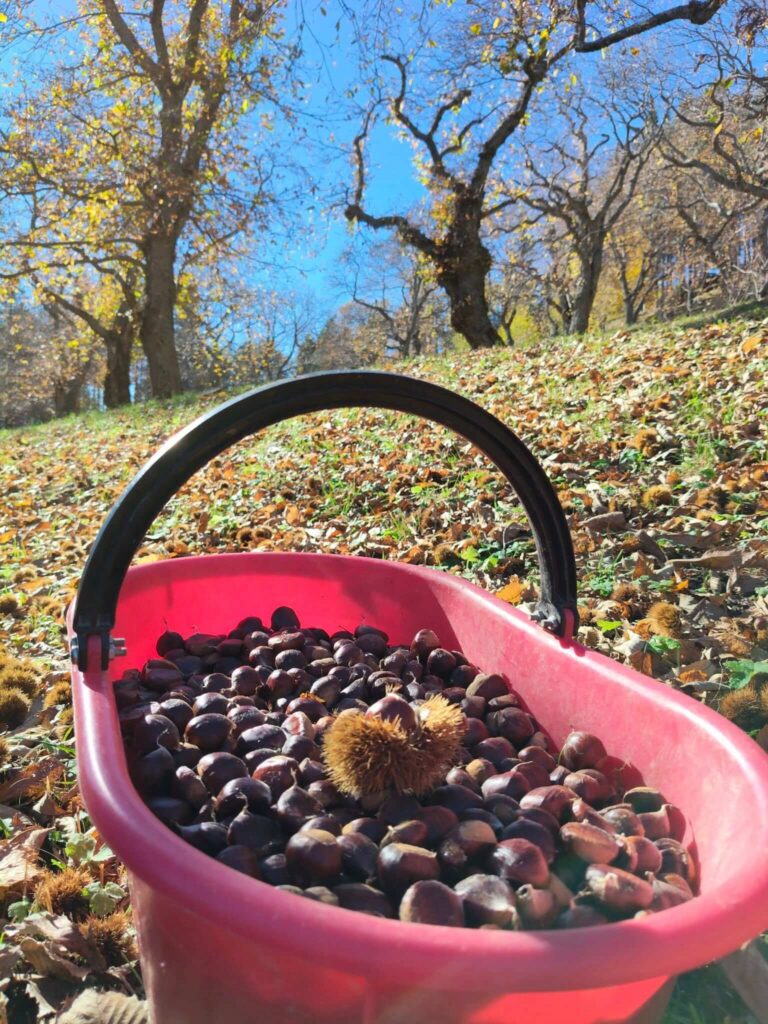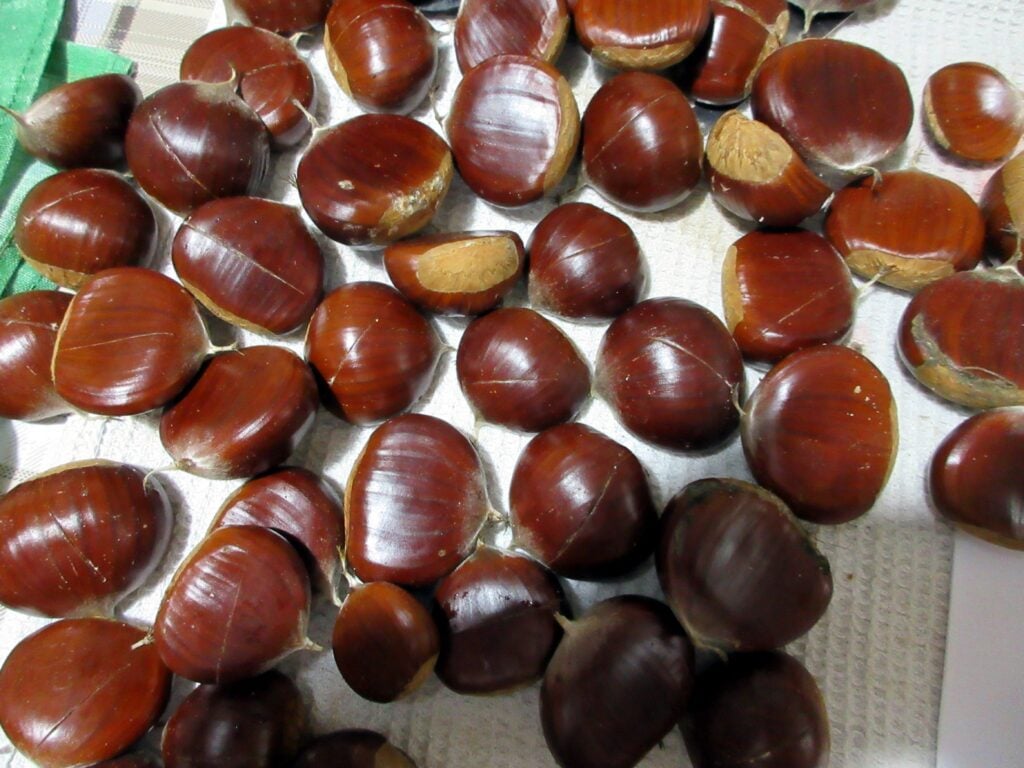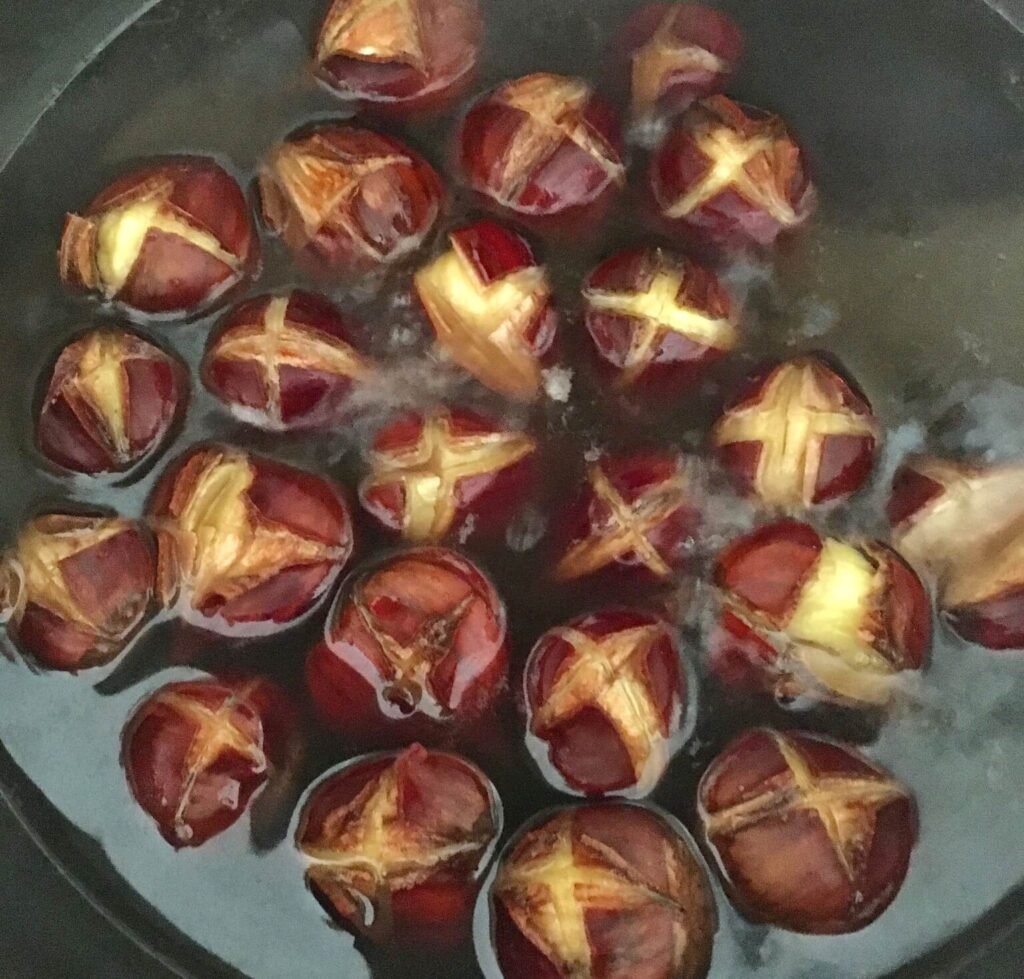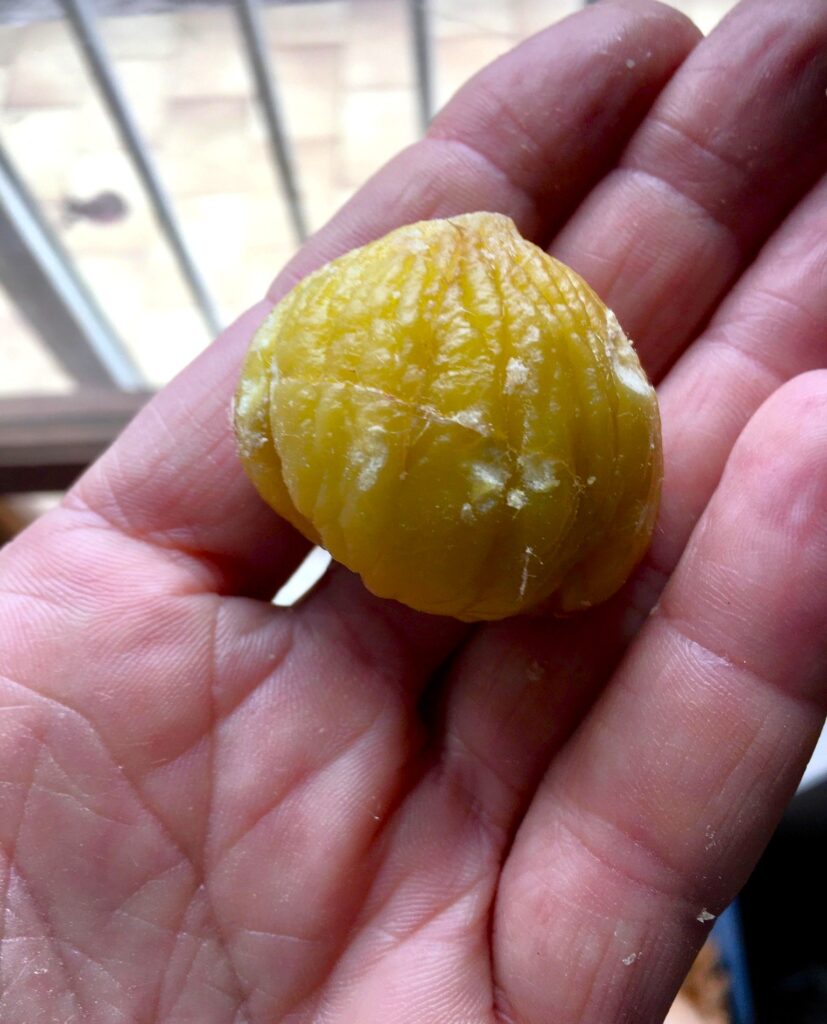Chestnuts are one of my favorite winter snacks.
They are very popular here in Italy, and it is also very common to go and pick them directly from the woods, which are full of them.
I know that in other parts of the world they are not easy to find, but there are still many people who love them and want to prepare them, even if they have to buy them at the supermarket.
In this article, I will explain how to make them in the easiest way, using my grandmother’s method. In no time, you will have them soft and delicious, ready to eat!

What You’ll Need
Let’s start by seeing what we need to prepare them. No special tools are required, so you should already have everything you need at home.
Obviously, the first thing you’ll need is chestnuts. Choose fresh and raw chestnuts, without any other ingredients or spices added. If possible, prefer firm, unblemished nuts of roughly equal size for even cooking.
You’ll also need a pot or saucepan, large enough to hold all your chestnuts plus water.
It’s also important to use a sharp knife to score the shells. A paring knife or a special chestnut knife both work.
Also, prepare a slotted spoon or ladle for scooping out the hot chestnuts from the water and optional seasonings like a bay leaf, cinnamon stick, or a strip of orange peel if you like them.
Step-by-Step Chestnuts Preparation
With your tools ready, follow these simple steps.
Score each chestnut

Lay a chestnut flat on a cutting board (the rounded side up) and use your knife to cut a small “X” or slit in the shell.
Cutting through the hard shell and inner skin helps them peel off easily later.
Boil the chestnuts

Put the scored chestnuts in a pot and fill it with cold water, enough to cover them.
Bring the water to a boil on the stove, then let it simmer for about 15–20 minutes.
You’ll know they’re nearly done when the cuts in the shells start to pry open and the inner brown skin becomes visible.
Check for doneness
Lift one chestnut out with a slotted spoon and carefully peel it.
If the yellow nut inside is soft, creamy, and cooked through, the batch is done.
If it’s still firm, simmer the rest for a few more minutes and check again.
PRO TIP: Cooking time depends on size. Obviously, larger chestnuts will take longer.
Drain and cool
When cooked, drain off the hot water and transfer the chestnuts to a bowl.
A trick my grandmother always used was to cover the bowl with a clean kitchen towel and let them sit for about 10 minutes.
This keeps them warm and steamy, which actually makes peeling safer and easier.
Peel the chestnuts

Once they’re cool enough to touch but still warm, start peeling.
First, remove the tough outer shell, then peel off the thin inner brown skin.
The image below shows how easily the shell splits after boiling. If bits of skin stick, you can dip the chestnut back into hot water for a minute or two to loosen it.
Tips for Best Results
A few people told me that their chestnuts wouldn’t peel or weren’t cooked properly, so let’s look at some extra tips you should follow.
First, make sure your cut goes through the shell and into the papery inner skin. A good, deep cut (like a full “X”) helps the shell come off cleanly.
Remember that boiled chestnuts are much easier to peel when they’re still warm.
As they cool, the inner skin can adhere more. If they cool off too much, briefly reheat them in hot water.
Someone told me that some chestnuts weren’t cooked properly. Well, as I said at the beginning, you should try to pick chestnuts that are about the same size.
Large nuts take longer to cook than small ones. Cooking them together will be easier if they’re uniform. Otherwise, you have to remove the smaller ones and leave the larger ones in the water longer.
Another thing I forgot to mention in the preparation (but I don’t do it) is to add some seasoning in the water if you prefer extra flavour.

You can simply toss in a bay leaf, a cinnamon stick, or a strip of orange peel while boiling. It infuses a warm, aromatic note into the nuts, especially nice if serving as a holiday snack.
Why Eat Boiled Chestnuts?
Boiled chestnuts are great for different reasons. They’re not just tasty, they’re also good for you.
Consider that chestnuts contain carbohydrates for energy along with plenty of vitamins and minerals.
They’re especially high in vitamin C and B vitamins, and 100g of chestnuts can provide about 70% of your daily vitamin C. They’re also rich in dietary fiber, which aids digestion.
In addition, unlike many other nuts, chestnuts are naturally low in fat and calories.
This makes them a heart-healthy option and suitable for people with gluten sensitivities, stomach or digestive problems.
Lastly, of course, one of the best reasons is the taste. Boiled chestnuts are naturally sweet and nutty.
They make a delicious snack on their own, but you can also add them to many sweet and savory dishes.

